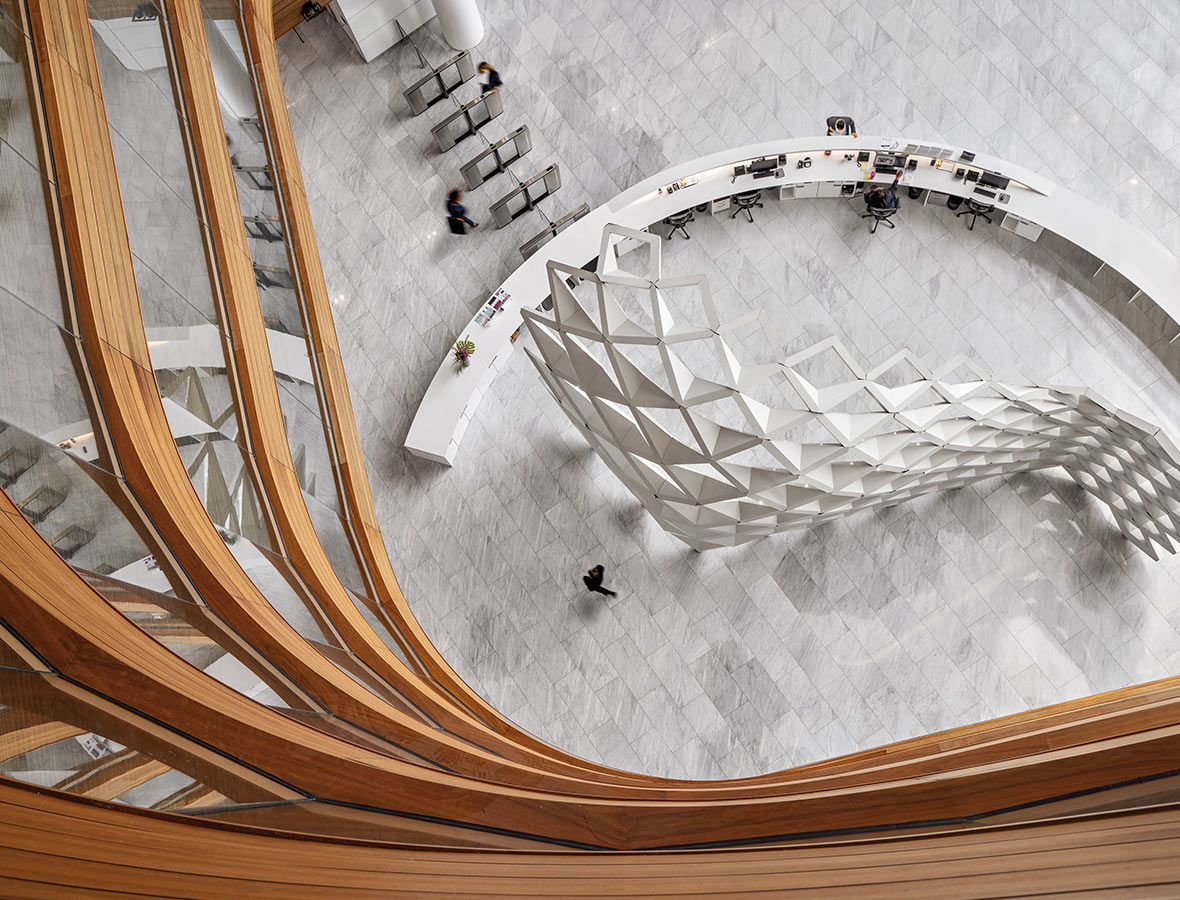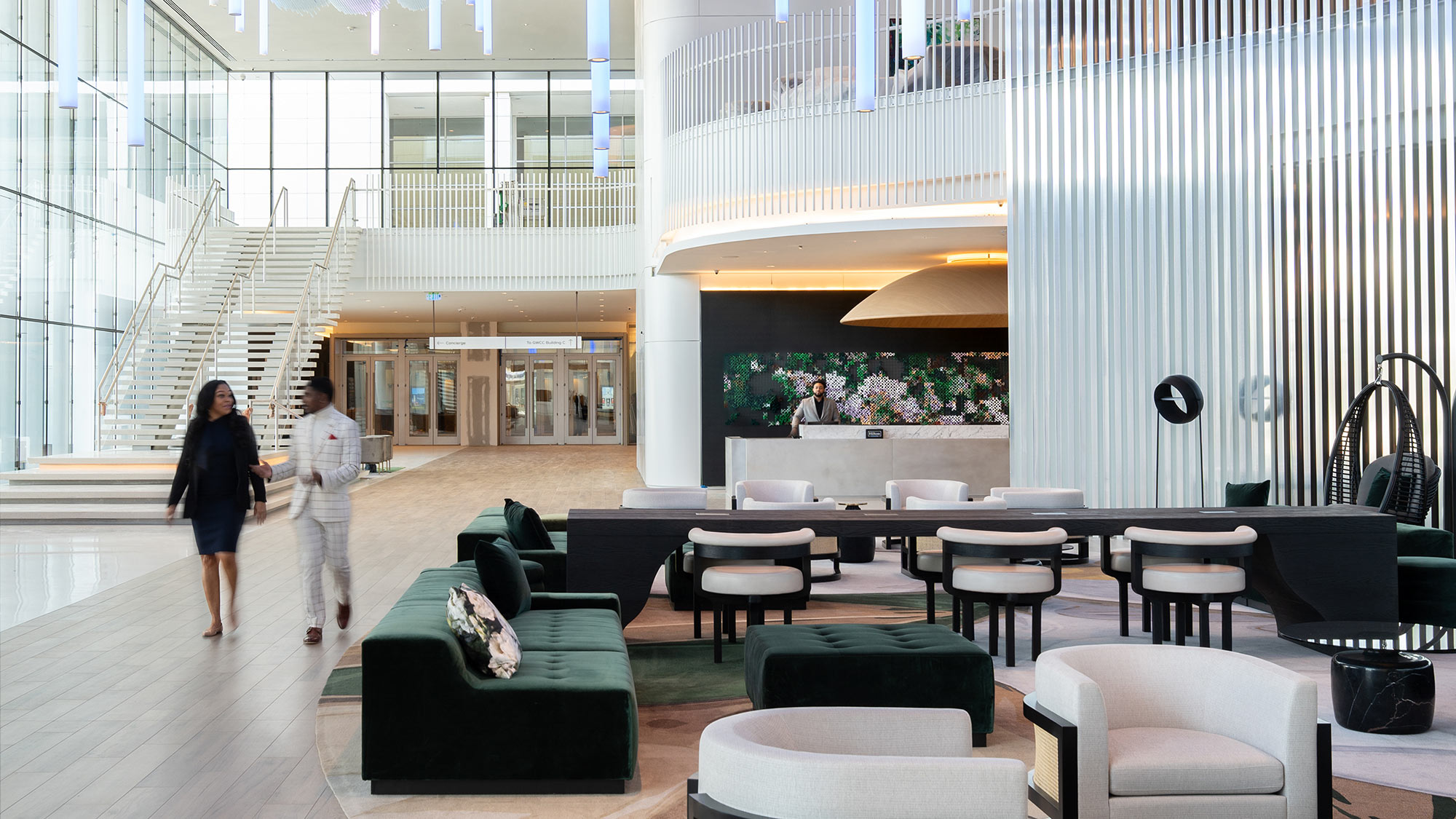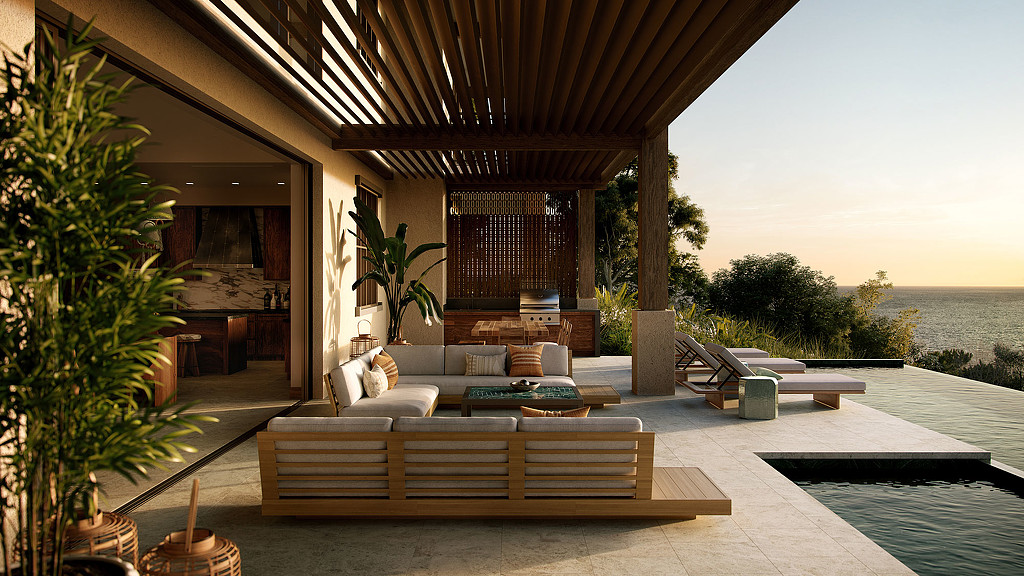The Trends Shaping the Future of Hospitality
December 13, 2023 | Q&A with Tom Ito, Trevor To and Ana Ardon
Editor’s Note: This blog is part of our Design Forecast blog series, looking at what’s next in 2024 and beyond. Here, we sit down with Tom Ito and Ana Ardon, global leaders for Gensler’s Hospitality practice, and Trevor To, global Hospitality design resilience leader, to discuss what’s next for hospitality design.
What are the biggest trends that you’re seeing impacting hospitality operators in the next five years?
Tom Ito: There’s been a big shift in terms of what people value. They value experience over things and they’re willing to pay for it — whether it’s learning, enriching their lives, forming social connections, or searching for meaning. Hotels are embracing these types of experiences both within and outside of their properties, thus changing the perception of hotels as just being a place to stay to a place that that embraces their aspirations.
Ana Ardon: We continue to see an increased demand for ultra luxury and luxury branded residences, globally, particularly at resort destinations. An example is the Ritz Carlton Reserve in Costa Rica. We’re also seeing clients do branded residential without the hotel. You no longer need the resort to leverage the branded residences.
Trevor To: At the same time that we’re seeing strong growth in luxury, on the flip side, there’s widespread concern about value for money and budget travel. People want to travel but with inflation, they are cautious about their spending. According to Gensler’s Hospitality Experience Survey 2023, people prefer to do more trips at a lower cost than one big trip a year. In view of this, some resort operators are converting properties or dedicating some portion of their property to all-inclusive products.

How are you seeing hotels merge with other industries, such as sports and entertainment?
Tom: There are increasing global opportunities with integrated resorts with the addition of gaming in combination with entertainment venues and hotels. The blending of sports, stadiums, live entertainment, and music events creating increased demand for hotel stays will be an ongoing trend for the foreseeable future. Also, sports stadiums are being designed with interiors and amenities inspired by a hospitality look and feel.
Ana: In urban settings, it’s the synergies between these sectors that are driving hotel stays, whether it’s mixed use, residential, entertainment, or sports, or outdoors connections. It’s more of a synergistic relationship that marries all these different types of offerings together to create a holistic experience.
Trevor: Traditional hotelier brands are extending to other travel products and creating more brands for different niches. We’re also seeing non-hotel brands moving into hotel products as well, such as Virgin Cruises, which has had huge success in their adult-only products, and the Cheval Blanc Hotels launched by Louis Vuitton. That kind of cross-pollination will likely continue.
What are some examples of how hotels are using AI and other technologies?
Tom: Hotels are implementing more mobile apps, AI, and automation to enhance service while addressing ongoing labor shortages in the industry. We’re seeing an integration of technology to enhance the experience — not to replace it. AI, machine learning, and web3 technologies are changing not only the hotel guest experience but how hotels are operating. Hospitality is experiencing a labor crisis that has impacted hotel operations. These types of technologies help create operational efficiency, allowing staff to redeploy more of their time catering to guests.
Ana: Hotels are now using AI to manage inventory control, do advance bookings, and learn guest preferences to provide personalized recommendations and service. I think we’re going to see a lot more interaction and growth in that space because we’re just at the beginning of it.
Trevor: Post-occupancy monitoring is critical to obtain data to evaluate performance of new equipment such as ground thermal energy. Designers and engineers could help operators to analyse the data of these new technologies to optimize future provisions. There are huge opportunities for research and collaboration in this aspect among building professionals, academic partners, and owners.
How is sustainable travel impacting the hotel industry?
Tom: People are willing to spend more for sustainable travel. Also, governments are responding to climate initiatives to reduce carbon footprints by implementing regulations. France recently banned short-haul domestic air travel to curb flight emissions. Bhutan is charging tourists a daily fee to offset overtourism because of the impacts of travel and the burden on the country’s local resources. We’re seeing the effects of tourism, both the positive and the negative.
There are also changes in the types of materials we specify, both in hotel interiors and architecture. We created the Gensler Product Sustainability Standards (GPS) to define the types of products we’ll be using and specifying in projects. By using low-carbon and green materials and products, we are significantly reducing a building’s overall embodied carbon. Our goal is to use materials with either an Environmental Product Declaration (EPD) disclosure or those that identify Global Warming Potential (GWP) limits.
Trevor: Hotels are looking at methods and strategies to achieve net zero commitments on every aspect of the hotel industry’s value chain. On the design side, we are glad to see the establishment of whole life-cycle carbon assessment standards are being set up. This allows all stakeholders to have consistent and accurate carbon measurement methodologies across the board. Operators are keen to adopt certified equipment and products to optimize efficiency and reduce their carbon footprints. Our Ruby Hotel project in Marseille, for example, has a heating and cooling network powered by marine water originating from France’s first geothermal power station, located a stone’s throw away at Grand Port Maritime de Marseille. The solution harnesses heat energy contained in the Mediterranean Sea and supports a local source of renewable energy.
Ana: The demand for sustainability is not just coming from travelers, but also from investors. Due to the large investment sums required to carry out a hospitality project, private banks take active roles in the projects. These stakeholders are increasingly wanting sustainability to be part of the conversation. Our clients are coming to us for sustainability plans in response.
How are hotels embracing wellness and inclusivity?
Ana: People are willing to pay more for eco-friendly businesses or travel, so they’re being very socially aware of how they travel. And that’s giving rise to wellness travel. It’s more than just wellness; guests are looking for experiences that enhance their lifestyle and spiritual connection. Hotels can embrace this growing trend by offering varied on-site health and wellness experiences, from meditation retreats to yoga programs. This could be complemented by partnering with the immediate community to complement their wellness event portfolio.
Trevor: The industry realizes how important it is to embrace inclusive design in all aspects ranging from gender identity to ability, age, and culture. For example, we’re starting to see many hotel brands in the U.S. have advertised now that guests are welcome to stay with their pets. And more and more people talk about neurodiversity and mental health, and how design can cater for people in this spectrum. But industry guidelines and standards are still being defined. This is a dialogue we want to initiate, explore, and collaborate with stakeholders, and I think it’s something we’ll see increasingly in the next decade.

Are there any major differences internationally in the way that clients are approaching their projects?
Tom: Across the globe, each project has to respond to its local culture and its people, and that’s what makes it unique and special. What people value in the United States might be different from Europe or Asia. For example, in the Middle East, we design buildings that provide quick access to prayer spaces, creating the need to increase the number of elevators in the core, all in respect to local culture and tradition. The other thing that’s really big is local cuisine. Travelers are seeking healthy, eco-friendly, local places to eat that are sustainable and add authenticity to their experience.
Ana: We’re seeing more hospitality brands that are standardizing. The standard has become a little more uniform globally, whether you’re in a Hilton in Atlanta or Argentina — the experience might be different from a local perspective, but you’re still going to get the same quality of service. The growth of hospitality brands in the last several years has allowed for a larger portfolio of properties that allow travelers to experience new destinations with the confidence that their travel needs will be met. This provides them with a benchmark of the services that will be provided in the hotel and general expectations of the design experience.
How are hotels strengthening connections to their local communities?
Ana: People want hotels to help guests interact with the local community and learn about the local culture. For example, there’s an historic hotel in Antigua, Guatemala, that invites artisans inside to sell their crafts.
Tom: In the Middle East, for example, hotels want to teach the world about their culture and open the doors to tourism. We’re seeing hotels embrace those types of activities and amenities — it’s not just in the design, but also the experience.
Trevor: Many hotels are commissioning art works from local artists, sourcing food from their local farms and creating event programmes with local vendors. All these are great ways to allow guests to fully embrace local life, and at the same time fulfill sustainable sourcing criteria that aligns with the UN Sustainable Development Goals.
For media inquiries, email .


